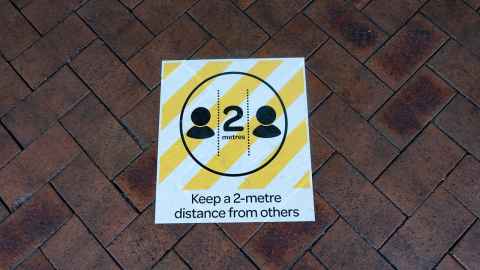Staying safe in solidarity
4 June 2020
Opinion: NZ is not beyond issues of racial discrimination being protested in the US, but we should have been mindful of how we showed our solidarity, writes Mike Lee.

Over the long weekend, approximately 4000 protestors gathered in major centres around Aotearoa to protest against the killing of George Floyd in the US and in support of the Black Lives Matter movement.
This show of solidarity, in a Covid-19 climate of nationalism and self-preservation, demonstrates that we still care, and have something to say, about cases of moral injustice beyond our own borders. It shows we are civilised and kind, benefiting from our physical isolation while ideologically connected to our global partners.
But, given we are still at Level 2, the country could have benefited from more decisive leadership before the events occurred.
Perhaps the Government should have gotten wind of what was brewing and intercepted the mass gatherings by suggesting a number of well organised ‘physically distanced vigils’ in all major town centres. Imagine the effect of thousands of Kiwis kneeling in silence across the country at the same time.
As is the case with many social movements, the gap between public sentiment, tipping point, and public action occurs too quickly for most authorities to predict.
Such a coordinated show of solidarity would have been more appropriate than a march since we have done so well to keep to our Covid-19 plan. But, alas, as is the case with many social movements, the gap between public sentiment, tipping point, and public action occurs too quickly for most authorities to predict.
In any case, the mass gatherings have left our politicians in a tricky predicament.
I suspect all support free speech. I think most would also agree on an international show of solidarity for such an important cause. But some would also see the mass gatherings at Level 2 as a ‘slap in the face’ for people and businesses who have had to sacrifice their livelihoods or considerable fortune in order to obey our stringent social distancing rules over the past few months.
So, what can we do about the 4000 people who have been at those gatherings? And where do we go from here? Director-General of Health Dr Ashley Bloomfield suggests isolation is not necessary for them, which sounds promising, but I think we can leverage these gatherings further to New Zealand’s advantage.
Here’s how:
- First, we know New Zealand can test thousands of people for Covid-19 every day. So, everyone who was at the protests should go get tested. This would provide data proving that in New Zealand we can now have gatherings of thousands of people with no community transmission.
- Second, people who want to attend a protest can still follow social distancing rules: they can wear a mask and adhere to hand washing rules and hand sanitiser use, avoid hugging fellow protestors, keep a distance from people who are singing and shouting – and be prepared to leave if more people turn up than expected.
We know New Zealand is not beyond the issues of racial discrimination of which the Black Lives Matter movement raises awareness, and events on Monday showed we can have mass demonstrations on racial topics respectfully, without resorting to violence or rioting. Of this we should be proud. But some Level 2 mindfulness around making voices heard in a Covid-19 environment would have extended that respect to everyone in our Aotearoa community.
Dr Michael SW Lee is Associate Professor of Marketing in the Business School.
This article reflects the opinion of the author and not necessarily the views of the University of Auckland.
Used with permission from Newsroom Staying safe in solidarity 4 June 2020.
Media queries
Alison Sims | Research Communications Editor
DDI 09 923 4953
Mob 021 249 0089
Email alison.sims@auckland.ac.nz